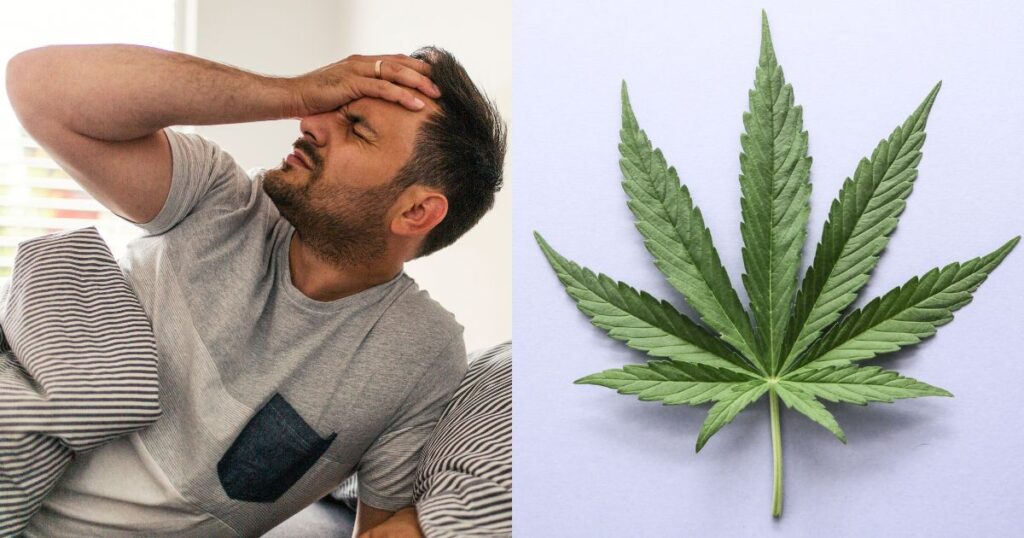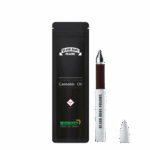For millions of people who suffer from debilitating migraines, hope may be emerging from an unexpected source. A placebo-controlled clinical trial has provided the first compelling scientific evidence that cannabis can significantly reduce migraine symptoms, offering new possibilities for those who have struggled to find effective relief through traditional treatments.
The study, presented at the American Headache Society Annual Meeting 2025, marks an important step in cannabis research research. Led by Dr. Nathaniel M. Schuster, a pain and headache neurologist at UC San Diego Health Center for Pain Medicine, this research breaks new ground as the first placebo-controlled trial examining vaporized cannabis for acute migraine treatment.
“This is the first placebo-controlled study in this space,” Dr. Schuster told Medscape Medical News, who first reported about the trial. “It’s the first real compelling evidence for the antimigraine effects of cannabis in humans.”
These words carry significant weight for the estimated 39 million Americans who live with migraine disorders, many of whom have exhausted conventional treatment options, and have found little relief.
Understanding the Study Design
The research involved 92 participants with a history of migraine who received treatment during moderate-to-severe migraine attacks between November 2020 and February 2023.
Participants used vaporized cannabis flower provided through the National Institute on Drug Abuse Drug Supply Program.
The study employed a randomized, double-blind, placebo-controlled crossover design where patients received one of four treatments during their migraine attacks: 6% THC alone, 11% CBD alone, a combination of 6% THC and 11% CBD, or a placebo.
Participants were instructed to avoid other migraine treatments before onset but could use rescue medications after two hours if needed.
What makes this research particularly valuable is its rigorous methodology. The crossover design meant each participant served as their own control, reducing variables that might influence results.
Additionally, the use of a custom smartphone app allowed researchers to capture real-time data on outcomes and safety events, providing unprecedented insight into how cannabis affects migraine symptoms as they occur.
Results Across Multiple Symptoms
The findings were striking across multiple measures of migraine relief. At the two-hour mark, 68.9% of patients using THC and 67.2% of those using the THC/CBD combination reported pain relief, compared to just 46.6% in the placebo group. Both THC-containing groups showed statistically significant improvements over placebo.
Even more encouraging, the THC/CBD combination demonstrated superior results for complete pain freedom, with 34.5% of patients reporting they were pain-free at two hours, compared to only 15.5% in the placebo group. This represents more than double the success rate of placebo treatment.
The benefits extended beyond pain relief to address other debilitating aspects of migraine. Among participants using the THC/CBD combination, 56.9% experienced improvement in photophobia (light sensitivity) compared to 37.9% in the placebo group. Sound sensitivity improved in 74.1% of the combination group versus 51.7% of placebo recipients.
Perhaps most importantly for long-term quality of life, the THC/CBD group showed sustained pain relief and symptom freedom extending to 24 and 48 hours after treatment. This durability of effect suggests that cannabis might not only provide immediate relief but could help break the cycle of recurring migraine episodes.
Adding to the Mountain of Evidence
These results represent far more than an isolated positive study. They add substantial weight to a growing body of evidence demonstrating cannabis’s legitimate medical applications. For too long, political prohibition has overshadowed scientific inquiry, but studies like this one are impossible to ignore or dismiss.
Previous research has already indicated that nearly one-third of migraine sufferers have used cannabis for symptom management, with most reporting significant effectiveness.
Survey data consistently shows that patients experience reduced pain severity and decreased migraine frequency when using cannabis preparations.
Some studies have found that migraine sufferers can reduce or eliminate their use of prescription drugs when cannabis is available as a treatment option.
The UC San Diego trial validates what patients have been reporting for years through anecdotal evidence. Dr. Schuster noted that some patients likely already self-medicate with cannabis during migraine attacks, though they may not disclose this to their physicians due to stigma or legal concerns.
A New Frontier in Pain Management
What makes these findings particularly significant is how they challenge conventional approaches to migraine treatment. Traditional medications often come with significant side effects and may not work for all patients.
Some people develop medication overuse headaches from frequent use of conventional treatments, creating a cycle where the cure becomes part of the problem.
Cannabis offers a fundamentally different approach. The study found no serious adverse events among participants, though some experienced mild side effects like drowsiness or euphoria that typically resolved within hours.
The fact that CBD appeared to moderate the psychoactive effects of THC when used in combination suggests that patients can achieve therapeutic benefits without overwhelming intoxication.
The research also revealed that patients didn’t need recreational-level doses to experience relief. Participants reported therapeutic benefits at relatively low levels of intoxication, suggesting that medical use can be distinct from recreational consumption.
Federal Barriers Hold Back Medical Progress
Despite these promising results, patients seeking cannabis for migraine relief face significant obstacles. Federal prohibition continues to classify cannabis as a Schedule I controlled substance, alongside drugs like heroin and LSD, supposedly indicating no accepted medical use and high potential for abuse.
This classification creates numerous barriers to research and patient access. Scientists must navigate complex regulatory hurdles to study cannabis, while patients in many states cannot legally access the treatments that might provide relief.
Even in states with medical cannabis programs, migraine may not qualify as a approved condition, forcing patients to seek alternative diagnoses or continue suffering.
The irony is profound. The same federal government that provided the research-grade cannabis for this UC San Diego study continues to maintain that cannabis has no accepted medical use.
Meanwhile, mounting scientific evidence demonstrates clear therapeutic applications for conditions ranging from chronic pain to epilepsy to PTSD.
We’ve barely scratched the surface of cannabis’s medical potential. This plant contains over 100 different cannabinoids, each with unique properties and potential therapeutic applications.
THC and CBD are just the beginning. As research expands, we’re likely to discover targeted treatments for specific conditions, optimized dosing protocols, and combination therapies that maximize benefits while minimizing side effects.
Implications for Migraine Sufferers
For the millions of people living with migraine disorders, this research offers genuine hope. Migraine is far more than just a headache—it’s a neurological condition that can be utterly debilitating, affecting work, relationships, and quality of life. Many sufferers have tried multiple medications without finding adequate relief.
Dr. Schuster recommends that patients start with standard-of-care treatments like triptans or CGRP inhibitors before considering cannabis.
However, for those who don’t respond to conventional therapies, cannabis may provide a valuable alternative. The study’s use of vaporized flower, rather than concentrates or edibles, also offers guidance on safer consumption methods.
The research suggests that combination THC/CBD products may be optimal, providing superior pain relief with fewer psychoactive side effects than THC alone. Patients should limit use to avoid potential medication overuse headache and work with knowledgeable healthcare providers when possible.
A Turning Point in Cannabis Medicine?
Advocates who have long argued that cannabis is medicine, this study provides powerful ammunition. For patients who have struggled with conventional treatments, it offers hope. For researchers, it demonstrates that high-quality cannabis studies are possible despite regulatory obstacles.
Most importantly, this research reminds us that we’re still in the early stages of understanding cannabis’s medical potential. Each well-conducted study builds our knowledge base and moves us closer to evidence-based cannabis medicine.
The plant that has been demonized for decades is revealing itself to be a sophisticated therapeutic tool with applications we’re only beginning to comprehend.
As more research emerges and public attitudes continue evolving, we may look back on studies like this one as the foundation for a new era in pain management and neurological treatment. For migraine sufferers and cannabis advocates alike, that future cannot come soon enough.
















